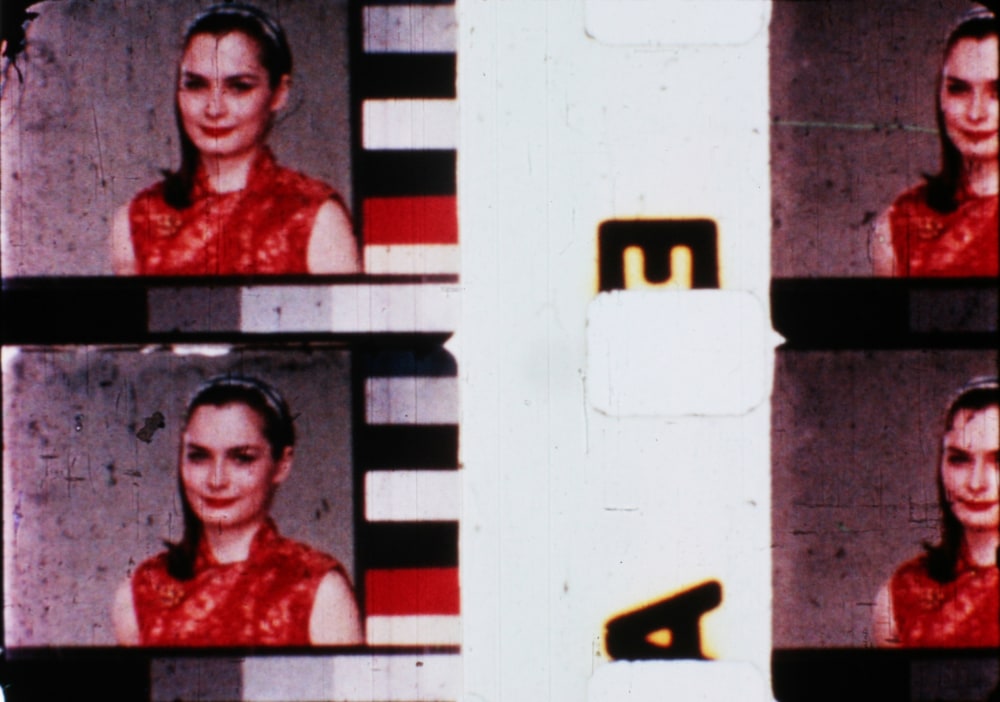
Owen Land (George Landow), Film in which There Appear Sprocket Holes, Edge Lettering, Dirt Particles, etc., courtesy of Anthology Film Archives, New York.
To make films out of films, to recombine and repurpose pre-existing images, is one of cinema’s most enduring and fruitful projects, a practice quite nearly as old as the medium itself. Lumière pictures were strategically cobbled together by savvy exhibitors in the late 19th century to maximize their appeal, yielding a kind of proto-newsreel, while Edwin S. Porter’s 1902 Life of an American Fireman advanced narrative style with its shrewd, relatively seamless intercutting of documentary “topicals” and newly staged elements. Soviet auteur Esfir Shub unlocked the form’s revolutionary potential with 1927’s The Fall of the Romanov Dynasty, taking reels like the home movies of Czar Nicholas II as the raw stuff of its dialectical montage, and a decade later Joseph Cornell's Rose Hobart (1936) would push the idiom into still more experimental terrain by deranging B-movie East of Borneo into an oneiric portrait of its eponymous star. It was not until the 1960s, however, that the genre's aesthetic possibilities would truly effloresce.
“Waiting for Commercials” looks back on this era and serves as a counterpoint to the films currently on view at Ortuzar Projects by Peter Roehr, whose sequences transform their original sources via a methodically iterative process. “I change material by repeating it unchanged,” Roehr once wrote. “The message is the behaviour of the material in response to the frequency of its repetition.” Contextualizing his contributions to found footage cinema, then, will be a range of contemporaneous efforts: the urgent cine reciclado of Santiago Alvarez, the eerie audiovisual collages of Arthur Lipsett, Bruce Conner’s powerful study of the Kennedy assassination, Malcolm Le Grice’s elaborate manipulations of his childhood home movies, Nam June Paik and Jud Yalkut’s appropriation of Japanese advertising, Joyce Wieland’s richly-hued loops of cutting room cast-offs, Owen Land's minimalist moviemaking, and Schmeerguntz, wherein Gunvor Nelson and Dorothy Wiley hijack the mass media iconography of womanhood and reroute it toward new horizons.
Arthur Lipsett, 21-87, 1963, 10 minutes
Owen Land (George Landow), Film in which There Appear Sprocket Holes, Edge Lettering, Dirt Particles, etc., 1966, 10 minutes
Gunvor Nelson and Dorothy Wiley, Schmeerguntz, 1966, 14 minutes
Joyce Wieland, Handtinting, 1967, 6 minutes
Malcolm Le Grice, Little Dog for Roger, 1967, 12 minutes
Santiago Alvarez, Now, 1965, 6 minutes
Bruce Conner, REPORT, 1963-1967, 13 minutes
Nam June Paik and Jud Yalkut, Waiting for Commercials, 1966-1972, 7 minutes
RSVP to info@ortuzarprojects.com